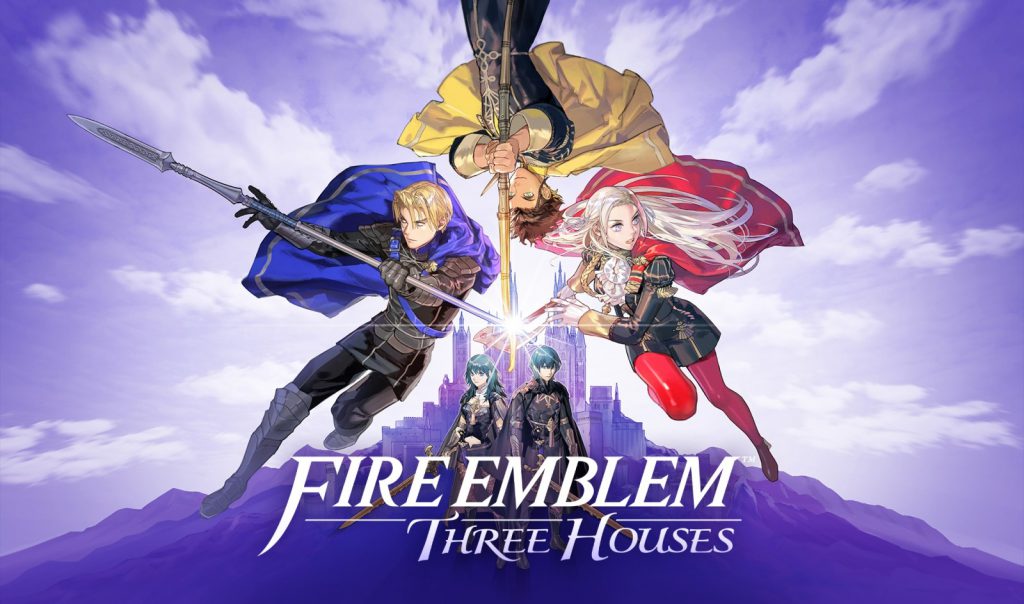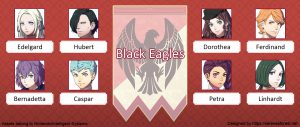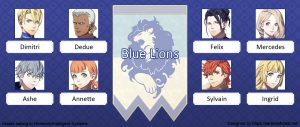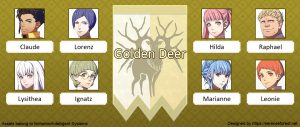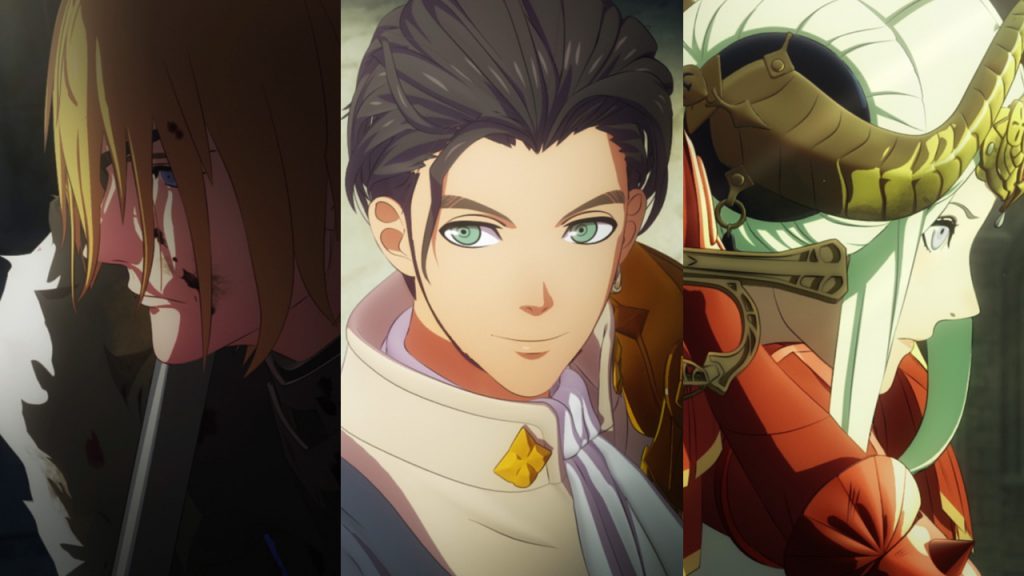Next month, on 26th July 2019, Fire Emblem: Three Houses will launch on the Nintendo Switch. Aside from Pokemon Sword and Shield, Three Houses is quite possibly Nintendo’s biggest title for the latter half of 2019. For fans, it holds an important significance because it’s the first console title since Fire Emblem: Radiant Dawn way back in 2008 (wow, it’s been that long?).
Anyway, regardless of your history (or lack of history) with the series, Three Houses is shaping up to be an incredible game. For those of you who haven’t been following the game–or want a refresher–I’ll be covering all the key information that we know, from all the various E3 coverage and also from Japanese magazines.
To begin with, Three Houses begins a completely new storyline, separate from other games in the series. So nobody needs to be concerned about jumping in and feeling lost. The game takes place on the brand new continent of Fódlan, which is home to three powerful nations. Long ago, war gripped the continent, but now the nations co-exist in peace.
You play the role of a young mercenary with a mysterious, arcane power (well, it is a Japanese RPG after all!), who’s invited to become a teacher at a very special academy, where all the students come from influential backgrounds. These students are also divided into three houses according to their nationality, hence the game’s subtitle.
As a teacher, you will choose one of the three houses to lead. Which house you choose will determine the selection of students that you teach–and ultimately use in battle.
The Black Eagles is home to students from the Adrestian Empire, which occupies the southern half of the continent. The leader of this house is Edelgard, a smart and dignified woman who’s in line to become the next Emperor.
The Blue Lions is the place where you’ll find students from the Holy Kingdom of Faerghus, a realm of noble knights towards the frigid north. Its house leader is Dimitri, a chivalrous and cheerful prince from the Holy Kingdom.
Last but not least, the Golden Deer takes in students from the Leicester Alliance, a conglomeration of nobles located in the east. Claude, who hails from Leicester’s ruling family, is the house leader; he’s a sociable guy with a bit of a cunning side.
Once you’ve chosen your house, that’s when the game really starts. This time, the gameplay is divided into two distinct, but deeply connected halves. In the first half, you will fulfill your role as a teacher by instructing your students and developing their war skills. Meanwhile, the second half is the traditional Fire Emblem battles that takes place on grid-based maps.
Obviously, what sets this game apart from others in the series, is the teaching aspect. So let me discuss that in some more detail.
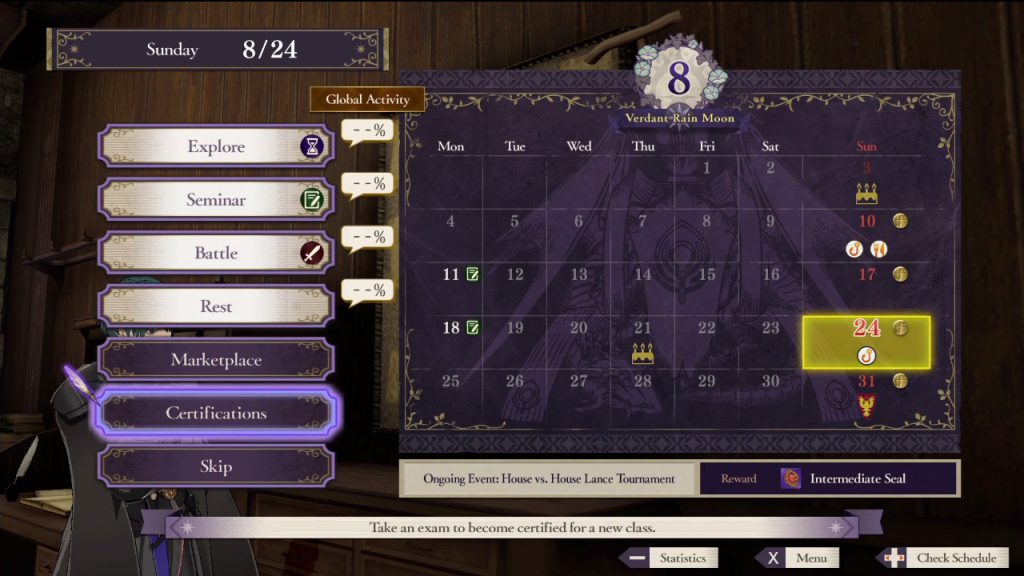
“Global activity” lets you know what other teachers across the world (via the Internet) did during the same time period, so you can better decide your actions.
Firstly, like in real life, the game follows a calendar. Each chapter of the game lasts an in-game month. At the start of each week, you’ll be asked to form a lesson plan for your class. Now this is still a game, so this isn’t quite as daunting as it might sound!
You’ll have the option to individually instruct one of your many students (or let the game automatically do it for you). This involves selecting one of their skill levels to train and improve. Skill levels represent a character’s aptitude in various categories, like weapons (swords, lances, axes etc.), magic, leadership or even horse-riding.
By increasing a character’s skill level, you can let them equip better weapons, unlock new abilities and so forth. In addition, all characters have a job class–at the beginning, everyone is a lowly Noble or Commoner. However, they can take exams to class-change to different, usually better, classes and these exams demand proficiency in certain skill level(s).
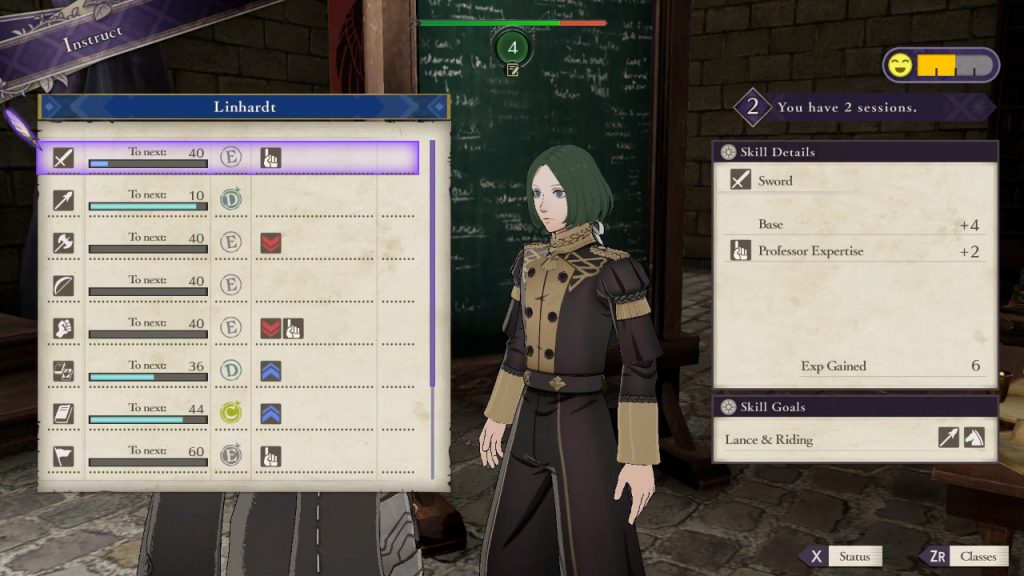
Characters may have strengths and weaknesses in different skill levels, For example, Linhardt here is good at Reason and Faith magic. But weak in Axe and Fighting.
Besides this, you can set study goals for each of your students. This allows you to handpick up to two skill levels for them to focus on during self-study. If you want a character to become a sword-toting Mercenary for example, it’s a good idea to make them focus on swords. Furthermore, each week, you can assign two students to a group task, to improve their movement-related skill levels.
Once you’ve decided everything, simply hit “Start Class” and you’ll automatically begin teaching, the days flashing forward before you. Huh, if only real teaching was this easy. If there are any special events during the week, the game will briefly stop on those days. Otherwise, it’ll advance to the last weekday. At the end, you’ll get the report for your group task and the results of your students’ self-study.
And if anybody fails to turn in their homework, you can give them detention. …Maybe?
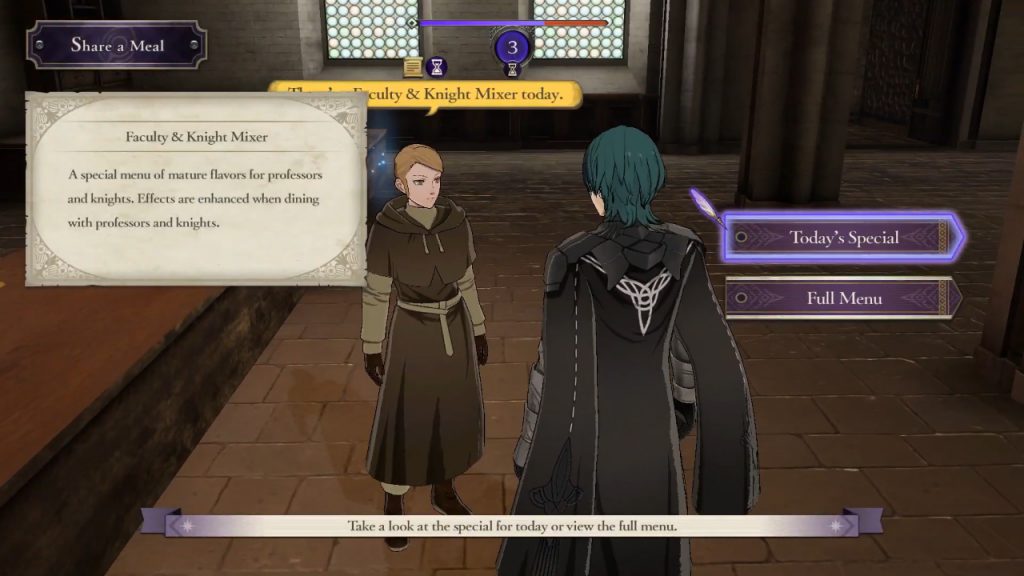
When exploring the campus, you can spend “activity points” at places like the dining hall, which provides food that temporarily enhances stats.
When the weekend rolls over, you’re allowed a short break from your obligations as a teacher. During this time, there are many things you can do. Namely, you can explore the campus grounds, attend or give weekend seminars, head out to battle, visit the market to restock on supplies, take exams to change class for yourself or your students, or simply rest like a lazy log. Hey, I earned this rest… Zzz…
Exploring the campus is a game in itself. As you may have seen in trailers, you can explore the entire campus in full 3D. As you run around, you can chat to students and faculty staff, to get to know them better. If you have time on your hands, you can accept quests from bulletin boards, share a meal at the dining hall, grow crops at the greenhouse, even do a spot of fishing. There’s lots to see and do!
Eventually, the weekend will end and another new week will begin–and the cycle continues.
As the weeks go by, hopefully your students will become stronger and you’ll get to learn more about them. This is very important because at the end of each month, you must undertake a field study mission, which involves a battle with very real stakes. Completing this mission will end the current month and then the next chapter will start.
That’s school life in a nutshell; let’s talk about the battles next!
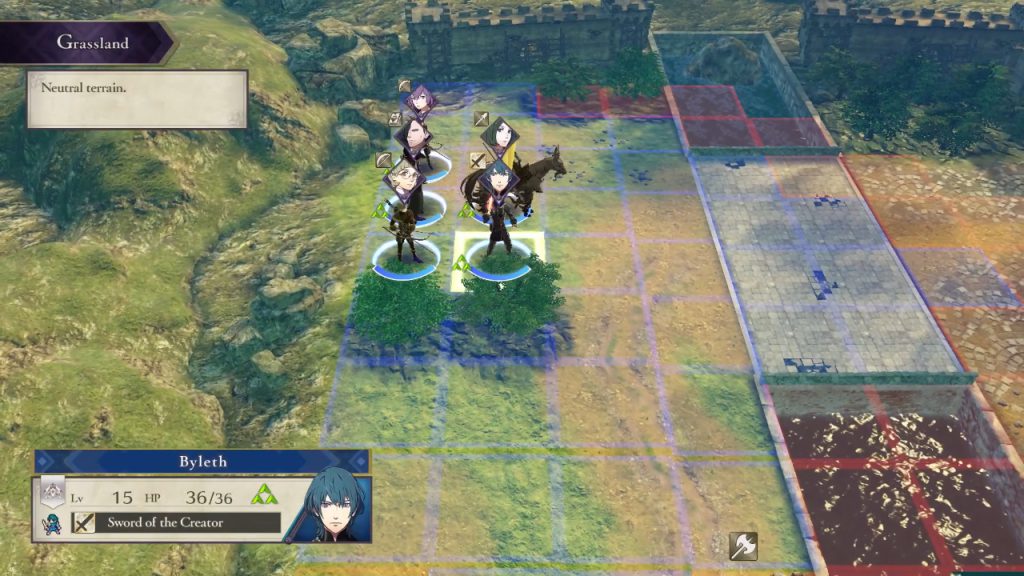
Blue squares indicate where you can move, while red squares show where you can attack.
Unsurprisingly, the core gameplay is largely unchanged from previous games. In simple terms, you and the enemy each take turns to move all of your units (characters) on the map. Units can have different movement ranges, depending on their class. For example, horseback Cavaliers have very large movement, while slower Armored Knights have much less.
If an enemy unit is in range, you can choose to fight them. If so, your unit will attack with their weapon, then the enemy may retaliate. If one of the units has significantly higher speed than the other, they may unleash a second attack, known as a “follow-up attack”. If a unit reaches 0 HP, they are removed from the map. You win once all the enemies are gone or the victory condition is met.
For those unware, Fire Emblem is rather notorious for its permanent death system. That is, if one of your characters reaches 0 HP, they’re gone forever; they won’t return for the next battle. This makes the battles feel more tense and ensures that every move counts. If that sounds too scary for you (I don’t blame ya), you can pick Casual Mode at the start, which brings back fallen units.
That’s the basics of battles, but obviously there’s a lot, lot more than that.
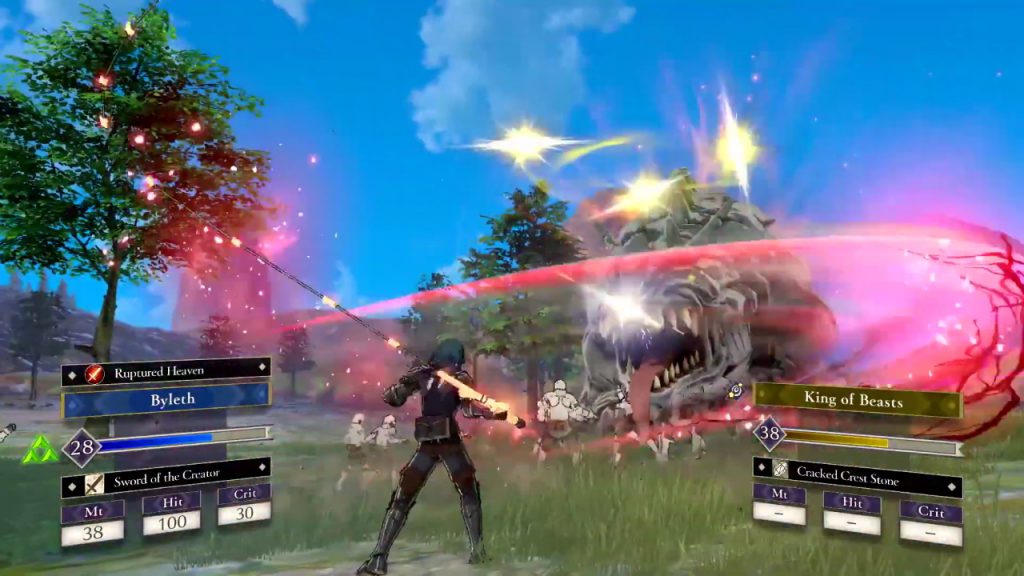
“Ruptured Heaven” is a devastating Art unique to the Sword of the Creator. It deals increased damage against dragons.
As well as simply attacking with a weapon, characters can unleash flashy techniques known as Combat Arts. If you’ve played Fire Emblem Echoes, you should be familiar with these. Combat Arts can deal more damage than normal and/or have special effects, like boosted damage against horseback foes. The downside is that they expend more of your weapon’s durability, causing them to break faster.
Characters also possess special Abilities, which provide a variety of passive effects. There are three types of Abilities–one that’s unique for each character, their Personal Ability, Class Abilities that are tied to the character’s current class and Skill Level Abilities, which are learned by improving skill levels and can be mix and matched.
New to this game, you can hire and equip supportive squads–called Battalions–for each character. These Battalions accompany characters during combat, enhancing their combat stats. Also, when a Battalion is equipped, characters can use special Gambits, which uses their Battalion to unleash an extra-powerful assault on the enemy or provide a tide-turning buff for your allies.
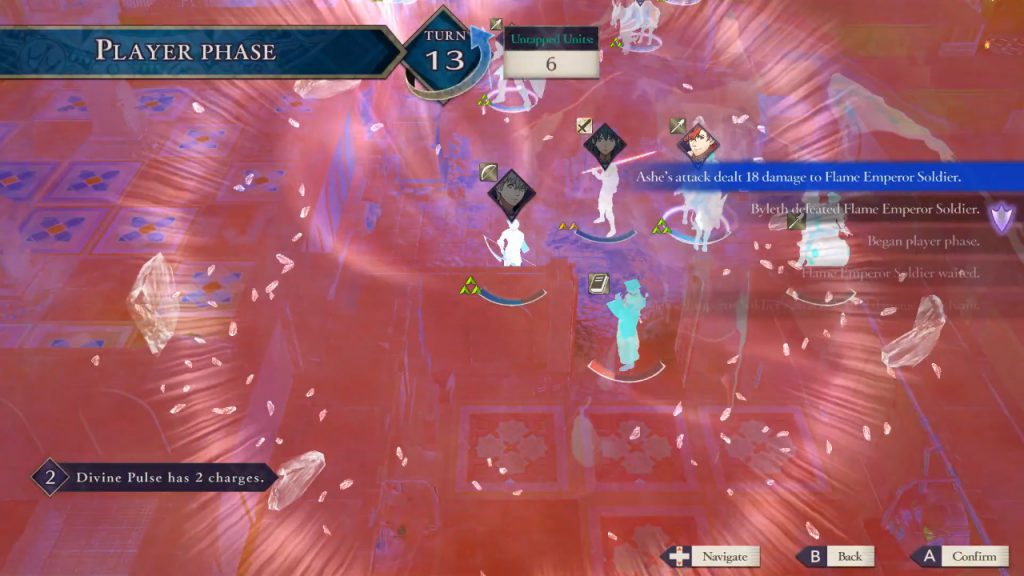
“Divine Pulse” is amazing for people who keep losing units halfway or near the end of a battle. Like a certain Fayyaz…
If things have taken a bad turn, you can temporarily break the laws of causality using the power of Divine Pulse. This works like Mila’s Turnwheel in Fire Emblem Echoes, letting you rewind past actions and turns. If somebody’s died, you can rewind to before that happened, then make a different move to prevent that from happening. You can only use Divine Pulse a few times per map though.
Well then, I’ve covered both halves of the game… or have I?
Actually, that’s still only half of the game. Because the game itself is literally split into two halves. The first half we’ve already talked about: your eventful days as a teacher at the academy. Where you do your best to nurture your students, to make them upstanding citizens of Fódlan–and probably the best killing machines known to man…
Meanwhile, the second half takes place 5 years later in a war-torn Fódlan. In this era, the peace that you once knew is a thing of the past, as the three nations–now under the command of the three former house leaders–are locked in a savage war. You’ll fight alongside the students that you taught 5 years ago, while students from other houses may face you as enemies.
That’s everything important that you need to know, but if you’re itching to know more, you’re in luck!
Over on Serenes Forest, you can find a lot of detailed information about the game in the Three Houses section. In particular, the pages on the right contain a lot of general information, including things I didn’t have space to mention like crests. If you’re a massive Fire Emblem nerd, the pages on the left have a lot of in-depth analysis for you to pour over.
To finish off, thanks for reading and I hope this article has persuaded you to buy–or at least look into–the game, if you haven’t already done so. Once the game comes out, I’m hoping to write a few articles with helpful tips as well. So, er, I’ll see you later?
